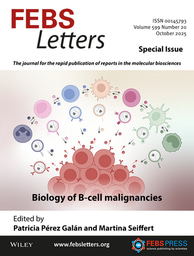Reducing plastic waste in the lab: saving the planet–and money

As scientists, we should always be motivated to optimise our experiments, and such optimisation should include determining the minimum amount of time and resources required to reach the expected outcome. Eliminating unnecessary steps and resources also has the additional benefit of saving costs, as well as reducing the amount of waste.
In an article published in the June issue of FEBS Letters, Patrick Penndorf of the sustainability initiative ReAdvance provides guidance on how to reduce plastic waste in the lab, and provides a concrete example of how plastic can be reduced by 65% by optimising a protocol for the transfection of neurons.
The basic principles of waste reduction are (i) reduction–eliminating plasticware that is not absolutely necessary, (ii) re-use–identifying instances in which the same item can be re-used without contamination, and (iii) miniaturization–using an item of the smallest size possible.
For full details on how to reduce plastic waste and ensure that global research efforts remain sustainable, read the full article here.



Join the FEBS Network today
Joining the FEBS Network’s molecular life sciences community enables you to access special content on the site, present your profile, 'follow' contributors, 'comment' on and 'like' content, post your own content, and set up a tailored email digest for updates.